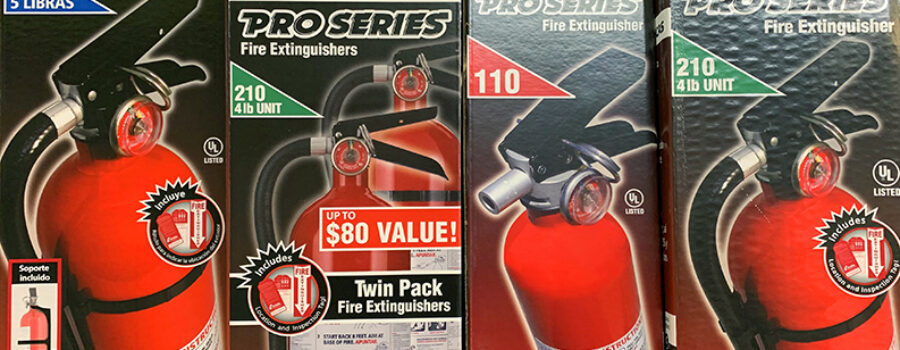Fires are one of the most common threats to safety that small businesses face. Healthcare facilities must be prepared for fire prevention and response. Deciding whether employees should fight fires with an extinguisher or evacuate is critical. Often, relatively small fires can be extinguished by well-trained employees using fire extinguishers. To safely accomplish this, employees must understand the limitations and use of fire extinguishers and the associated hazards.
Facility evacuation plans that require some or all employees to fight fires can present challenges. This article reviews two important considerations: 1) Risk Assessment and 2) Should employees be prepared to fight fires or instead evacuate immediately?
Risk Assessment
Perform a risk assessment of your office right away. This assessment should anticipate the size of the fire, the evacuation pathways, and the atmosphere (breathing conditions) in the area of the fire.
|
Risk Assessment |
Qualities of small fires that CAN BE extinguished with fire extinguishers |
Qualities of fires that SHOULD NOT be fought with fire extinguishers – immediate evacuation mandatory! |
| Size of Fire | Fire is limited to the original ignited material.
Fire is contained (e.g., in a waste basket). Flames are at or below firefighter’s head. |
Fire involves flammable solvents
Fire has spread over more than 60 square feet. Fire is partially concealed behind wall or ceiling. Fire cannot be reached from a standing position. |
| Air Quality | Fire has not depleted oxygen in room.
Fire is producing only small quantities of toxic gases. No respiratory protection is required. |
Fire requires respiratory protection due to poor air quality. |
| Environment Quality | Room temperature is only slightly increased.
Visibility is good. Smoke may be accumulating but present only on ceiling. No special protective equipment is required. |
Heat is easily felt on exposed skin making it difficult to approach within 10 feet of fire or the extinguisher’s effective range.
Personnel must crawl on the floor due to heat and/or smoke. Smoke is quickly filling room, decreasing visibility. |
| Exit Path | Clear evacuation pathways exist BEHIND fire fighters. | The fire is not contained, and fire, heat, and/or smoke block exit pathways. |
Employees: Be Prepared To Fight or Evacuate Immediately?
The most effective way to protect employees from fire-related injuries is to evacuate the facility immediately rather than providing fire extinguishers for employees to use. Training employees to use fire extinguishers and maintaining them can require considerable resources. In choosing, consider factors such as the proximity of your local fire stations and the viability of exit (egress) routes.
Fire extinguishers have two functions: 1) extinguish or minimize small fires and 2) protect evacuation routes that would otherwise be blocked by fires and/or smoke.
To extinguish a fire with an extinguisher, personnel must have immediate access to the extinguishers and know how to operate them effectively. Attempting to extinguish even small fires is risky. Fires can increase in both size and intensity within seconds, blocking exit pathways and smoke inhalation risks. The extinguishing agent in these devices is limited and can be discharged in mere seconds. Therefore, personnel should fight only very small fires.
Consider the appropriateness of the following four options and requirements for employee involvement in fire fighting:
|
Option 1 |
Option 2 |
Option 3 |
Option 4 |
| Immediate evacuation of all employees from the workplace when the alarm sounds. | Train and authorize specific employees to use fire extinguishers. All other employees must immediately evacuate workplace when alarm sounds. | Train and authorize ALL employees to use fire extinguishers. | Fire extinguishers are available but not intended for employee use. |
| Requirements | Requirements | Requirements | Requirements |
| Create an emergency action plan and fire prevention plan; train employees accordingly.
Fire extinguishers are not existing and are not required. |
Create an emergency action plan; train employees accordingly.
Abide by all general fire extinguisher requirements. Annually train designated employees to use fire extinguishers. Fire extinguishers must be inspected, tested, and maintained. |
Create an emergency action plan; train employees accordingly for any employees who will be evacuating.
Meet all general fire extinguisher requirements and train all employees to use fire extinguishers annually. Fire extinguishers must be inspected, tested, and maintained. |
Create an emergency action plan and fire prevention plan; train employees accordingly.
Fire extinguishers must be inspected, tested, and maintained. Extinguishers are but not intended for employee use. |





